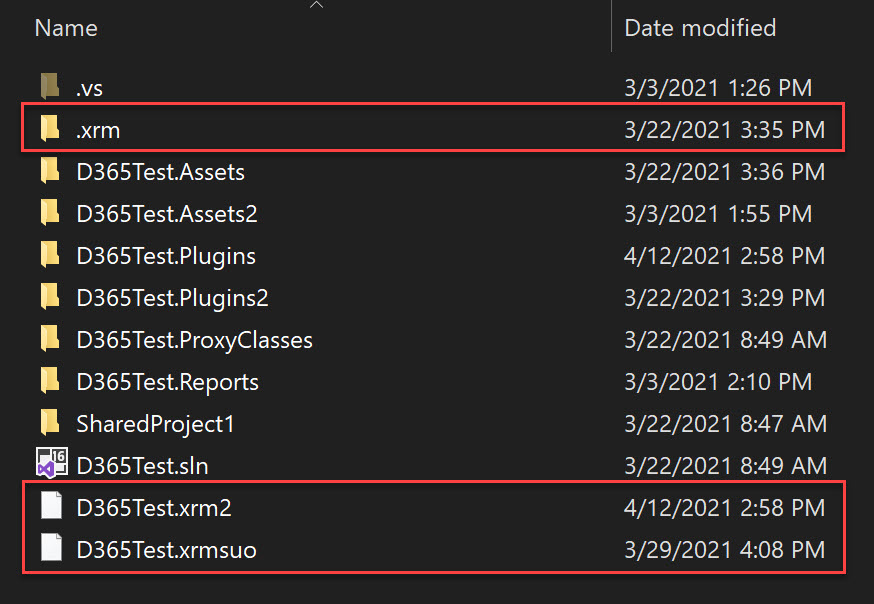XrmToolkit uses JSON based files to store configuration information regarding the links between your Dynamics 365 organization and your Visual Studio Solution. The following 2 files and 1 folder are generated for each solution that is linked in XrmToolkit:
As shown in the image below, these files are created in the same directory and with the same name as your Visual Studio solution:

The .xrm2 file contains the information that links your Visual Studio solution, project and individual files to each of the Dynamics 365 organizations. If you are using a source control system you should include this file.
The .xrmsuo2 file is an encrypted file containing username and password information (if selected to be saved) for each of the linked Dynamics 365 Organizations. If you are using a source control system you should NOT include this file.
XrmToolkit may also optionally create a hidden folder named '.xrm'. This folder is used to cache plugin files locally. This helps speed up the loading of the plugin window for plugins that do not change frequently.
The .xrm file has been replaced by the .xrm2 file starting with v7.
The .xrmsuo file has been replaced by the .xrmsuo2 file starting with v7.
The .xrmcache file contained entity and attribute metadata for each of the linked Dynamics 365 organizations. This file is no longer used starting with v7.